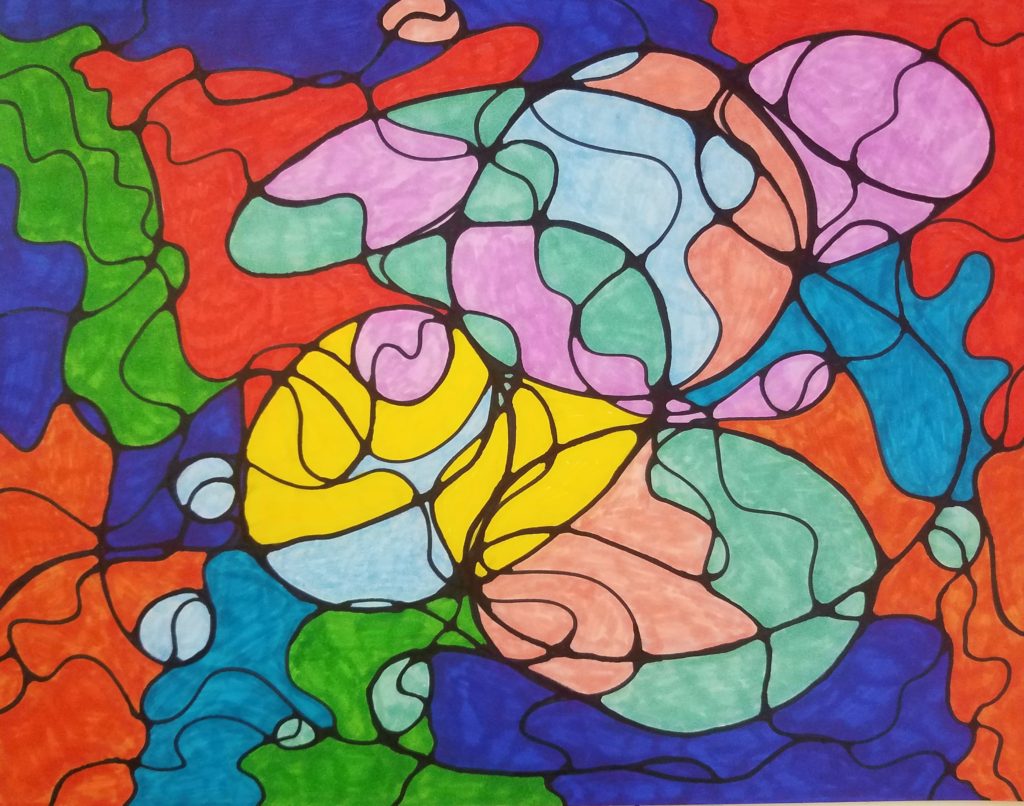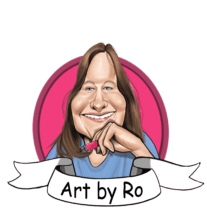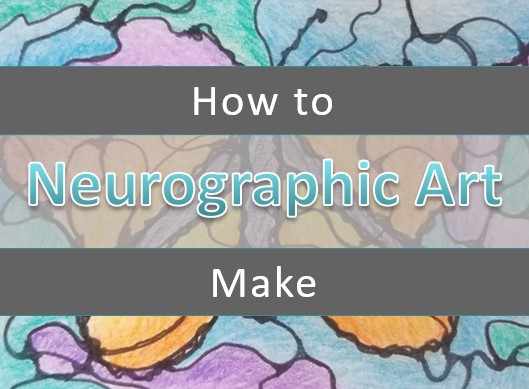Neurographics Step by Step for Beginners
Today you’re going to get an introduction to neurographic art. This is one of the most interesting new art forms.
The reason I want to share this style of art with you is because I had seen neurographical works of art on the internet, but didn’t even know what it was that I was looking at.
Once I realized what these works actually were, I became very intrigued by them.
* Some of the links in this post may be affiliate links. This means I receive small commissions for purchases made through these links at no extra cost to you.
Art Supplies
What is Neurographic Art
There are a couple of variations of this art form and a bit of contradiction between sources. But it’s a fairly easy concept to grasp and extremely fun and relaxing to create.
So first of all, there is neuroart and neurographical art, which are the same thing. They can be image based or abstract.
Neuorographica, is an entire process that is based off of a psychological method. It was created by the Russian psychologist Pavel Piskarev in 2014. When we draw using the Neurographica algorithms, it helps us engage more neurons.
Both types of neurographic art are really quite fascinating. I should mention that Neurographica is considered neuroart, or neurographical art, but all neuroart is not neurographica.
There are courses that teach Neurographica, but they are difficult to find and might not be close enough to make it possible to attend.
Both types are very therapeutic to create. The art form is a way to capture how the inner being reacts to the outer world. Neurographical art is a way to transform the fear and chaos of our world into something more calming and peaceful.
With all that being said, this is my interpretation of what it is, based off of my research. There is very little information available about this type of art. And most of it isn’t in English at this time. However, I feel it is still worth exploring and developing your own neurographic art.
Finding Inner Peace
Neurographics are a way to transform your stress into something calm. I absolutely love this idea and concept. Art is always about expression and finding that inner peace.
I actually stumbled upon this by accident while looking at images on Instagram. I mistakenly thought I was looking at alcohol ink art. When in fact, it was neurographical art.
Once I realized it was neuroart, I went to the internet and tried locating some information on what it was and how to make it.
But I came up short. There is very little information out there, at least in English.
I did manage to find one video on YouTube that did a pretty good job explaining it. And with what she taught, I felt confident with starting my first piece of neurographic art. She gives a good introduction to Neurographica and how the process works.
I’m going to take you through the steps of my own first attempts, as instructed by the video.
Neurographic Art Step by Step
Step 1: The Quest
As described in the video, I developed an idea for my Quest. For me it was about trying to find a balance between work, home, and finding time to work on this blog so I can do what I really love to do.
Your quests is just your goal, topic or theme. It should be something you are trying to find peace with in your life.
I wrote what my Quest was about on the back of my paper. This was so I would know what this drawing was about and so I could define what my quest was.
Step 2: Stressing Yourself Out
The next step in the process is stress yourself out so you can have a release of emotions. This sounds kind of strange at first, but after you experience it, that will change.
Then you scream it out, just like she says to do. When I was doing mine, I felt a little silly doing this, but it was part of the process so I followed along. When it was all said and done, I was glad I followed the process as described in the video.
This is an example of a stress picture.

The next step was to go back over your lines, and continue any lines that stopped short so they run off the edge of the paper.

When I created my first piece of neurographic art, I was so involved in the process that I completely forgot to take pictures along the way. These first pictures won’t match the final pictures, but the entire point was to get lost in the artwork. Which I completely did. And they still demonstrate how the process is done.
Continue by adding in some neurolines. At this point in the process I was still feeling some stress over what I was doing and whether or not it was right. But I found that the more I worked on it, the more comfortable I felt and I began to relax and go into a meditative state.

Step 3: The Power of Transformation
Law of attraction states you will attract into your life whatever you focus on. Whatever you give energy to will come back to you. Curving out is the process of transforming your reality. From whatever it is that’s causing you stress into something more positive.
As I was drawing and “Curving it out”, I started feeling more relaxed. She calls this part of the process tedious, but I actually enjoyed it. I felt release from my stress of everything going on in my quest.
Continue to work on your neurographic art until it feels complete to you. When I was working on mine, I felt a strong indication of when I needed to continue working and when it felt done. But, you have to let yourself go into a meditative state.

Step 4: Neurographic Art Coloring
I couldn’t find any information on how to color neurographic art. I’m really not sure if there is a specific process or set of rules. So, I grabbed my Bic markers and began coloring in some areas. Right or wrong, I used pastels for my inner world, and bolder colors for my outer world.

I don’t care for how it looks with the color added to it. However, I did enjoy the process and I love how relaxed and transformed I felt when I was finished with my lines and curving them out.
I’m considering doing another one of these with a different set of markers to see how it looks. I recently purchased some Bic markers and I absolutely love using them. You can read all about it in, Bic Intensity Marker Review – Fine Point.
Neurographic Art with Images
Upon doing some more research I came across another video on neuroart. This time the artwork was focused around an image. There was somewhat of a similar process, but not as heavily focused on transformation.
English Neurographica™ – ABC of Neuroart
When I did my next drawing I was still thinking about something in my life that was bothering me. And the butterfly is symbolic of this struggle.

I really like how this one turned out and would like to do a few more of these. This on was done on an artist trading card and will be traded off to another artist. Colored pencils were used for the colors.
Not familiar with ATCs? Check out How to Make Artist Trading Cards (ATCs).
I really enjoy making neurographic art. And the more I understanding it, the more fascinated I am by it. Art in itself should be therapeutic and relaxing, but there are ways to get yourself into more of a meditative state. The can be done through the creation of neurographic art.
Other Forms of Art Therapy
There are many ways to incorporate art therapy into your life. Doodling is a good way to relax and find inner peace. And of course, there’s neurographic art. Finding ways to go into a meditative state while creating your art will serve you with great benefits for mind, body, and spirit.
Another common form of meditative art are Zentangles. The Zentangle method has been around for years and is quite popular. A great way to get yourself started making Zentangles is with the Primer Pack. I purchased this a few months ago to get myself back into making them, and it was money well spent .
This starter kit is nothing short of amazing. You can read my full product review here, Zentangle Primer Pack Vol. 1 | Review.
An Introduction to Neurographic Art
Thank you for stopping by today and reading an introduction to neurographic art. I hope you found it as interesting as I do, and are ready to start making your own.
If you have experience with this form of art, please let us know about it in the comments below. Have a wonderful and creative day!
And don’t forget to download your free Neurographic Steps guide.



Thank you
Because of this article I fully found near graphical art and am now training with the woman in your video
Lana Shalom !
Thank you again
Rain
That’s wonderful! I’m sure working with her is an amazing experience.